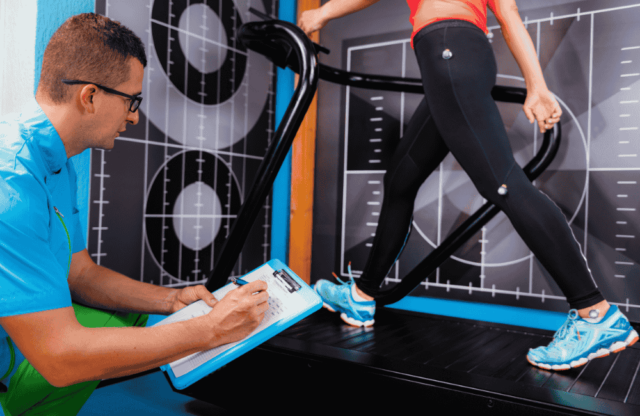The NFL recently announced the implementation across all 32 clubs of The Digital Athlete, an injury prediction tool powered by data and AI. Apple Watch, Fitbit and Oura Rings are among the things that pop into our heads when wearable technology is mentioned: devices that can track heart rates, movement and sleep. But through AI and revolutionary developments in sports technology, fitness monitoring improves ten-fold, and athletes are able to track their progress and health like never before.
Athletic directors, coaches and trainers across the country are following the lead, using these tools more and more to monitor player fatigue, track biomechanics and predict injury risks before they become season-ending setbacks. This technology provides real-time insights that help optimize training and protect athletes from overuse injuries.
How AI-Powered Wearables Work
AI-driven wearables use sensors, accelerometers and machine-learning algorithms to collect and analyze biomechanical data from athletes in real time. These devices are worn on various body parts: wrists, ankles, chest, mouth and even embedded in clothing or footwear. The data is then processed to assess factors such as fatigue levels, based on heart rate variability and workload trends; gait analysis and movement efficiency to detect inefficient or injury-prone mechanics; muscle exertion and recovery time to prevent overuse injuries; impact force tracking for collision-heavy sports like football and soccer.
By leveraging AI, wearable technology can predict when an athlete is at risk of injury and provide actionable recommendations.
Key Benefits for Athletic Programs
Injury prevention and early detection
Wearables track subtle changes in athlete’s stride length, knee alignment and joint stress: all indicators of potential injury risk. AI algorithms analyze these patterns and flag potential issues before they lead to serious injuries.
Fatigue management & load monitoring
Overtraining is a leading cause of injuries. AI-powered technology can track workload balance, helping athletic staff determine when an athlete needs rest, modified practice or extra recovery time.
Concussion and impact monitoring
For contact sports, wearable sensors can measure impact force and head acceleration to identify possible concussions. AI analyzes patterns of hits and suggests when an athlete should be pulled from play for evaluation.
Personalized training & rehab
AI wearables create customized training plans based on an athlete’s unique biomechanics, performance trends, and recovery speed. Coaches are able to adjust workouts to reduce injury risk, while athletic trainers can track rehabilitation progress and modify recovery protocols accordingly.
Popular AI Wearables in Athletics
Athletic departments are adopting cutting-edge wearables to gain deeper insights into athlete health and performance. Some leading options include:
- Catapult GPS Trackers – Used in football and soccer to measure workload, sprint speeds and fatigue levels.
- WHOOP Bands – Tracks heart rate variability (HRV), sleep quality, stress levels and recovery.
- Hawk-Eye Innovations – Allows users to track performance, balls and objects, even skeletal metrics.
- Smart Footwear – Monitors balance, gait and foot pressure.
- Prevent Biometrics Mouthguards – Detects head impacts and concussion risks.
- Vert Wearable Jump Monitors – Tracks jump mechanics to test explosiveness, endurance, vertical, landing and asymmetry.
Challenges and Ethical Considerations
Despite the benefits, AI-driven wearables present some challenges:
Data privacy concerns
- Who owns the biometric data: Schools, athletes or third-party companies?
- How should schools secure and protect player data from misuse?
Cost & accessibility
- High-end AI wearables can be costly for smaller athletic programs.
- Are there budget-friendly solutions for schools with limited resources?
Over-reliance on tech
- AI cannot replace human judgment—it should be a tool, not a decision-maker.
- Coaches need to combine data insights with traditional training expertise.
The Future of AI Wearables in Athletics
Predictive analytics for injury prevention
Future AI wearables detect injuries and predict them more accurately than a human could. Machine learning models will analyze multi-season data to estimate when an athlete is most at risk.
AI-powered smart fabrics
New technology will integrate AI sensors directly into uniforms and gear, eliminating the need for separate devices.
VR & AI wearables for mental conditioning
Wearables will soon integrate neurofeedback and VR training to enhance focus, reaction time and mental resilience.
Why ADs Should Embrace AI Wearables
While cost, data privacy and implementation challenges will need to be heavily considered, the potential benefits — fewer injuries, reduced medical costs and boosted player performance — make wearables a powerful tool for athletic departments. It’s more than new technology; it’s creating a new sports environment that is safer and more efficient.




